After We Hold These Truths‘ second vigil at Calvary Community Church in Phoenix, AZ in February, 2003, the Phoenix New Times published a groundbreaking story by Tony Ortega that is reprinted below. At the first vigil in front of this same Calvary Community Church in November 2002, the parishioners were so incensed by the vigil, that they defiantly lowered the American flag and raised the Israeli flag in its place, as shown below. The New Times story doesn’t use the term “Christian Zionist” to describe the church, as at that time this label had not yet come into common use, nor does the story include the church’s photo. Author Tony Ortega’s story is less than entirely favorable to us. He reaches out in an effort to be balanced, but we do not object to being called “Peace Mongers.” We are indeed grateful to the author for being years ahead of his time in publishing our plea for peace before most of the Middle East was bombed into the Stone Age. We refer our readers to our “Our Milestones” for additional history or our quest for peace in this ongoing era of wars.
Peace-monger
Thursday, February 13, 2003 at 4 a.m., Phoenix New Times
By Tony Ortega
Chuck Carlson stands in front of Calvary Community Church holding the sort of sign you’d expect to see at confrontations outside abortion clinics. “PRO-LIFE,” the placard reads in bold red and blue letters on a white background.
Carlson appears hopelessly out of place. He’s picketing a church that is home to a large congregation of conservative Christians, the kind of evangelicals who not only solidly oppose abortion but who also tend to read the Bible as literally as possible, think of the Earth as only a few thousand years old and vote Republican.
He gets mostly quizzical looks from the nicely dressed folks making their way to the meeting hall, and it’s not hard to understand why. Holding an anti-abortion rally in front of Calvary Community Church makes about as much sense as surrounding the national headquarters of the NAACP and singing “We Shall Overcome.”
And yet it’s here, outside this mega-church astride the Black Canyon Freeway south of Thunderbird Road, that Carlson and six others have chosen to hold a demonstration.
Almost none of the people walking by stop to ask why the 66-year-old north Phoenix resident is holding the PRO-LIFE poster in one hand and a large yellow sign with the message “IRAQ? WWJD?” in the other.
But Carlson knows that even the passers-by who avoid him can decode the message of his second placard. It was the conservative Christian community, after all, that made popular the latter four-letter code short for “What would Jesus do?”
For Carlson, the answer to that question is plain. No follower of the Prince of Peace, he says, should support a preemptive strike against another nation, even one as troublesome as Saddam Hussein’s Iraq. To Carlson, himself a conservative Christian, it’s simply inconsistent to be pro-life and not be anti-war.
Carlson and his born-again compatriots are just one of several unusual groups that have added to the swelling ranks of the anti-war movement in Phoenix. Organizers expect a crowd of between 2,000 and 5,000 protesters in Patriots Square Park on Saturday, February 15 which would make it the largest peace gathering in Phoenix since the Vietnam War era. Similar rallies are planned in cities around the nation that day, and many will draw far larger crowds. But in a conservative town not known for public displays of political passion, such a turnout would be remarkable. Last September 27, a crowd of 1,500 protested outside a fund-raising dinner for gubernatorial candidate Matt Salmon that was attended by President Bush. Organizers say the crowd was a surprising mix of not only the college students and lefty types who tend to show up at such gatherings, but of others who object to President George W. Bush’s militaristic rhetoric including middle-class parents, liberal and moderate members of the local clergy and even some hawkish conservatives uncomfortable with the idea that the United States would strike first.
But perhaps the most unusual participants were Carlson and his comrades, who not only oppose a war on Iraq, but have chosen an extraordinary way to advance their agenda: They target local churches that refuse to take a stand against aggression.
Chuck Carlson left his job as a mining consultant in 1996 to dedicate himself full time to a cause that he’d first struck upon during the Gulf War. At that time in 1991, he belonged to a Southern Baptist congregation and was shocked that the pastor had nothing to say about the large loss of Iraqi life in Operation Desert Storm. Today, Carlson is a member of Mountain Valley Community Church, an evangelical congregation. Laughing, Carlson says his pastor’s “probably wondering when we’re coming to his church.”
After leaving his job seven years ago, he and six like-minded friends founded a company they call We Hold These Truths. Largely an Internet venture (www.whtt.org), We Hold These Truths is not tax exempt like other religious-based groups (Carlson says he wants to avoid the restrictions on political activity that come with nonprofit status). The organization pays him no salary and mostly operates with volunteer labor.
Carlson spends his time spreading the group’s message that American churches have not done nearly enough to foster peace. Only recently did he hit on the plan to hold demonstrations at places of worship in a program he calls Project Strait Gate, named after a biblical passage.
The demonstrations for the most part polite affairs, which Carlson prefers to call “vigils” involve no bullhorns, chanted slogans or violent clashes with police. Carlson, a white-haired grandfather of average height who sports a goatee and dresses smartly, asks his companions not to raise their voices or accost church members, and he purposely keeps the events small. If more than 10 of his members show up to a vigil, Carlson splits up the group and sends some to another church to picket.
“We’re not trying to overwhelm anybody,” he says.
Project Strait Gate’s appearance at Calvary Community Church on February 2 was the group’s eighth event since October. Most of the protests have taken place at large evangelical community churches, but Carlson and his friends have also shown up at Catholic and Episcopal institutions. He acknowledges that some of the places he has targeted, including the Catholic and Episcopal churches, are member organizations represented by the Arizona Ecumenical Council, which has made an unequivocal statement of opposition to war in Iraq. However, Carlson believes individual churches also have an obligation to make their positions known.
“We issue a challenge to the pastor and his congregation,” Carlson says. “Most of them tell us they don’t take a position. But taking no position is the same as supporting war.” Carlson is especially critical of conservative congregations that purport to be anti-abortion but won’t take a stand against the deaths that result from modern warfare. “We are truly a pro-life organization,” Carlson insists.
Three days before Christmas, Carlson and Project Strait Gate descended upon All Saints’ Episcopal Church on North Central Avenue, displaying signs with slogans like “Choose Life, Not War” and “Blessed Are the Peacemakers.” “They were very mannerly,” says All Saints’ Reverend Deane Lierle. “I explained to them that there would be 600 people at the church and as many as 600 positions on the war in Iraq.” Lierle says that the diversity of thought among his flock makes him believe it’s inappropriate for the church to take an official stand. “We are not an anti-war church. . . . We have people on both sides of the issue,” he says. But for Carlson, such a response that a church can’t make a public stand because its members have differences of opinion simply isn’t good enough. Churches have an obligation to oppose war, he says, and if he had the time, he’d visit every church in Maricopa County and challenge their members with his biblical message that nowhere in the New Testament is there a justification for taking another’s life, particularly on a mass scale.
But Carlson’s reasons for picketing local churches go beyond a simple pacifist reading of scripture. Mainly, he’s convinced that America’s thriving born-again evangelical movement which forms a significant part of the president’s support is creating a generation of warmongers bent on the destruction of millions in the Middle East. And he’s not the only one. Along with their penchant for asking perfect strangers if they’ve accepted Jesus Christ as their personal savior, Arizona’s conservative, born-again Christians, like the millions of their brethren around the country, share a healthy fascination for biblical prophecy about the end of the world. Estimates of the numbers of such believers in the United States run remarkably high. A Gallup poll last year found that 46 percent of Americans or about 127 million people consider themselves “born again” or “evangelical” Christians. And a 1999 Newsweek poll found that 40 percent of Americans about 111 million believe that the world will end in an apocalyptic battle predicted in the Bible.
“Part of the support for a war on Iraq is coming from fundamentalist believers who see it as a step in the fulfillment of biblical prophecy,” says Paul Boyer, a recently retired professor of history at the University of Wisconsin at Madison and author of the book When Time Shall Be No More: Prophecy Belief in Modern American Culture. Millions of Americans, Boyer says, believe that they are witnessing the world’s final days, and search their newspapers every morning for fresh signs that biblical prophecies are coming true. Many people, for example, hold that the 1948 establishment of the state of Israel was a foretold, and necessary, precursor of Christ’s return. Another omen religious Americans anticipate: the rise of an evil yet charismatic figure, an antichrist who will establish a one-world government in the ancient city of Babylon. “The ruins of Babylon are about 50 miles from Baghdad. And one of Saddam Hussein’s projects is to rebuild it to its former glory. Biblical-prophecy people read that and say, Aha!'” Boyer says. “It flows into a general sense that Saddam is the antichrist, and it’s been a theme all through the 1990s: What is the prophetic meaning of Saddam Hussein’s dictatorship?”
Chip Berlet, senior analyst for the nonprofit Political Research Associates and a board member of Boston University’s Center for Millennial Studies, says equating Hussein with such biblical villains makes it easier to sell the idea that an attack makes sense. “I think there’s an unfortunate application of apocalyptic prophecies that includes the application of war. It’s a very dangerous phenomenon. Once you’ve demonized the other’ and said that Iraq is the axis of evil,’ what tactics couldn’t you use?” he says. That kind of thinking, both Boyer and Berlet contend, leads to a widely held belief that wars and other disasters are an inevitable consequence of scriptural truth. And with a born-again evangelical occupying the White House (Bush, a Methodist, had a “born-again” recommitment to Christianity in the mid-1980s), such beliefs may be having a profound effect on American foreign policy. “I think it’s a very significant influence. It helps create a climate of opinion that is inclined to go along with the destruction of Saddam Hussein in keeping with the plan for the end times,” Boyer says.
Berlet points to several high-ranking GOP members who have espoused end-times beliefs, including Attorney General John Ashcroft, House majority leader Tom DeLay and his predecessor, Dick Armey. The president himself injects many of his statements with religious language, Boyer says. “Bush comes out of a Texas evangelical, prophecy-believing religious background. He hasn’t said that he’s seen the destruction of Iraq as a fulfillment of biblical prophecy, but he has said things about matters being in the hands of someone more powerful than we are. Some might say he’s saying these things merely to please conservative Christians who tend to vote for him. But I believe this goes very deep with Bush.”
American obsession with apocalyptic end-time visions is usually traced to an Anglican cleric named John Nelson Darby, who made several trips to the United States from Britain beginning in 1859 and codified a belief system known as premillennial dispensationalism. Darby’s ideas, in turn, were championed by a reformed felon named Cyrus I. Scofield, who in 1909 produced a hugely influential reference edition of the Bible containing extensive footnotes promoting Darby’s dispensationalist interpretations. The Scofield Bible, revised several times and still available today, was particularly popular in important American seminaries, which helped spread apocalyptic readings of the scriptures. “Marshaling a small army of biblical proof texts from the books of Daniel, Ezekiel, Revelation and elsewhere,” Boyer writes, “premillennialists teach that wickedness will increase as the end approaches, culminating in the Great Tribulation, a seven-year period of cataclysmic struggle between the forces of evil and the forces of righteousness.” After those seven years of unprecedented war and destruction, Christ will supposedly return to Earth to establish a thousand-year reign of peace, the “millennium.” Before the seven-year period of tribulation begins, however, many believers expect that millions of true Christians will suddenly be called to heaven in a disappearing act they refer to as the “Rapture.” (Hence, they call themselves “pre-Trib” millennialists, to differentiate from “post-Trib” millennialists who believe that even devout Christians won’t be spared the rough years.) But none of this can take place, Scofield and his religious heirs believe, unless the Jews are in possession of all their ancestral territory in the Holy Land. Christ’s return will also supposedly require that the Jewish Temple be rebuilt in Jerusalem on land, known as Temple Mount, that is currently occupied by the Dome of the Rock and Al-Aqsa Mosque, one of the holiest sites in the Islamic religion. Evangelicals who buy such theories, Boyer says, not only advocate expanding the Jewish state beyond its present borders, but also look forward to a climactic battle over Temple Mount. “[They’re waiting for] the destruction of the Moslem shrine there, which would result in unbelievable violence,” he says. This biblical interpretation has led to an odd alliance since the evangelical Bush became president: Israel, which had traditionally found its strongest source of American support in the Democratic party, increasingly can count on political back-up from America’s religious right. “Suddenly many of the very same figures who not long ago called publicly and nationally for efforts to convert American Jews to Christianity now stand with Israel against PLO terror,” the National Jewish Post & Opinion noted recently. That support is highly cynical. Apocalyptic evangelists advocate armed support for a Jewish Israel, but they also believe just as passionately that before Christ’s return, many of those Jews will convert to Christianity and the rest will be killed. But Israel, particularly Ariel Sharon, has welcomed it. Others are more suspicious. “They don’t love the real Jewish people,” Gershom Gorenberg, the Israeli author of End of Days: Fundamentalism and the Struggle for the Temple Mount, told 60 Minutes. “[Evangelicals] love us as characters in their story, in their play, and that’s not who we are. If you listen to the drama that they are describing, essentially it’s a five-act play in which the Jews disappear in the fourth act.”
For Chuck Carlson, all of this means that many American Christians, who he says should be influenced by Jesus’ teachings of peace and forgiveness, instead salivate over the prospect of wholesale destruction at the hands of American troops. “It’s turned them into warmongers,” he says. “They’ve forgotten all about the beatitudes, such as blessed are the poor in spirit’ . . . and blessed are the peacemakers.’ Evangelical Christians are a powerful voting bloc. They are the glue that holds Bush’s war program together.”
Boyer and Berlet both note that a small number of evangelicals have always rejected dispensationalism and denied that current events are signs that the end times are near. (Most of the world’s Christians, meanwhile, including the Roman Catholic and Orthodox churches and many mainstream Protestant denominations, such as Episcopalians, also hold this view. Says All Saints’ Reverend Lierle: “We’re much more concerned with the Christian life in the now and not spending much time worrying about the end times.”) But each of the millennial experts said they had never heard of evangelicals such as Chuck Carlson going so far as to hold demonstrations against apocalyptic churches. “It is unusual,” Berlet says, “to see people doing outreach to people and churches to challenge them on this issue.” Yet that’s exactly what motivates Carlson on Sunday mornings, when he stands outside born-again congregations such as Calvary Community Church and holds up signs proclaiming peace, hoping to convince pro-life Christians that the teachings of their evangelical pastors have led them astray.
Mark Martin hardly seems like a warmonger. Calvary Community Church’s lead pastor is a charismatic and youngish 44-year-old who stands with an assistant pastor, a church deacon and several ushers as he greets the members of his flock entering the sanctuary. He will minister to about 1,200 people in what will be one of three services on this Sunday morning. His flock is so huge, about 300 people during each service must watch his sermon on TV monitors in an overflow room. The church complex also includes a restaurant, bookstore and other outbuildings.
Martin is clearly not overjoyed that Carlson and his posse have shown up with their signs, but neither does he seem perturbed. The last time Project Strait Gate appeared there, several weeks before, Martin’s security guards and Carlson got in a pissing match over a strip of gravel-covered ground serving as a sidewalk in front of the church. Was it public ground, or church property off-limits to the protesters? Police were called, and tempers flared. This time, however, Martin makes it clear that Carlson and his friends are welcome to the gravel strip.
Calvary Community Church is a 20-year-old institution that burgeoned from an 11-person congregation, and the legacy of a religious movement started by Jesus freaks in California in the 1960s. Says deacon Bob Barnier, “It grew from kids that were hippies on the beach into huge churches.” Asked if the hippies were opposed to the Vietnam War, Barnier replies, “Could have been.” Today, the heirs to this hippie tradition say they will make no statement against Bush’s intended attack on Iraq. “I’m not a politician, I’m a preacher,” Martin says. When he’s asked if his congregation studies end-times biblical prophecy, Martin says, “Yeah, I think we see [the establishment of] Israel being a fulfilling of prophecy.” Inside, once the service has begun, Martin looks out over the 900 people who take up nearly every chair in the cavernous sanctuary. It is a young congregation, seemingly very friendly and dressed somewhat casually. Martin begins by lamenting the loss of the space shuttle Columbia and its crew, but soon mentions that people outside the church are carrying signs regarding rumors of war. Martin makes no comment about Carlson and his group, then he begins speaking the language of dispensational, apocalyptic prophecy. “The current world situation is a powder keg,” Martin says into a mobile headset. “The prophecies say that the end of the world will bring very trying times. . . . Sacred human lives are at stake, but we can’t bury our heads in the sand.”
Outside, about 10 security guards and several Phoenix police officers keep watch on Carlson and his six companions.
Martin, meanwhile, leads his congregation in prayer. “The things we’re seeing are all signs of the coming of Jesus Christ,” he says. “Lord, your words say that in the last days there will be wars . . . and sudden destruction will come upon the world.” But if Martin sounds like he’s getting awfully close to endorsing such worldwide destruction, he then makes a heartfelt-sounding appeal for peace. “Lord, hold back war, hold back destruction. . . . Please bless our president, our cabinet, and other leaders of the world.” Few members of Martin’s congregation had any word for Carlson and his crew on their way into the service. But some did make pointed remarks in support of an attack on Iraq. “Stuff needs to be taken care of,” said Calvary member Greg Jacobs, 23, who added that he didn’t see a contradiction in being pro-life and pro-war.
One of Carlson’s colleagues, Paul Hansen-Mitev, says one congregation member, hurrying to hear the sermon, snapped at him: “We have to support Israel, we’re in the end times!” Hansen-Mitev is one of Carlson’s first converts. Just arrived in the Valley, he had happened to run into a Carlson-led protest while on his way into a Scottsdale Baptist church. “I wasn’t sure why they were protesting, but I was surprised that the first thing Chuck spoke of was the number of children dying in Iraq because of the [economic] sanctions,” Hansen-Mitev says. Soon, he realized he wanted to join the group. “What impressed me was that they did something so patently obvious. Rather than demonstrating in a public place or in front of politicians, they chose to demonstrate in front of churches that could have enormous influence on our leaders. I thought to myself, Why didn’t I think of this?'” About the few church members who confront him, Hansen-Mitev says, “Certain people believe it’s best that the Earth end soon. It makes them feel special if it’s true that this is the last generation.” The tall, straw-hat-wearing 27-year-old had taken a bus across town to join that morning’s demonstration, but he was perturbed that Calvary’s security guards had denied him a chance to go inside to hear Martin’s words, or even to visit Calvary’s bookstore. If Hansen-Mitev had, he would have seen rows of inspirational volumes, books that contained denunciations of Mormonism and Seventh-Day Adventism (filed under the heading “cults”) along with diatribes against Darwinism. And he might have noticed another section devoted almost entirely to a popular apocalyptic line of fiction.
The Left Behind books, which are hugely popular at Calvary Community Church, are a series of novels about premillennial dispensationalism that constitute one of the most remarkable publishing phenomena in American history. The first in the series was published in 1995, and the ninth volume, Desecration, was not only the most popular offering of religious fiction of 2001, it was the most popular hardback novel of any kind. It outsold John Grisham’s Skipping Christmas by nearly a million copies, marking the first time since 1994 that a Grisham novel did not top the charts. The previous eight volumes of the Left Behind series, meanwhile, were all among the top-25-selling trade paperbacks of 2001, according to Publishers Weekly. More than 35 million copies of the Left Behind series have been sold, and there’s no doubt that when the 11th volume, Armageddon, hits bookstores on April 8, it will quickly top the New York Times fiction chart.
Another 26 volumes for teens, called Left Behind: The Kids,have also been published by the writing team of “pre-Trib” expert Tim LaHaye and Jerry B. Jenkins, who before teaming up with LaHaye had ghostwritten autobiographies for several baseball players. And despite 2000’s box office dud starring Kirk Cameron, based on the first of the novels, more films are planned, as well as a Canadian television series soon to begin taping. (When an online poll was conducted in December to determine which North American city would host American Idol-like open auditions for the TV series, Phoenix placed third, behind Washington, D.C., and Seattle.)
Left Behind, the book that started it all, reads like an evangelical’s wet dream. It features the character Rayford Steele, an earnest, if self-doubting, commercial airline pilot with an annoyingly religious wife back home, whom he’s thinking of cheating on with the hottie stewardess serving on his recent 747 flights. But during one of his runs from Chicago to London, about half of the passengers suddenly vanish. As the remaining passengers awake in the gathering dawn, they realize that piles of clothes, rings and other items worn by the missing people are all that’s left of them. By the time Steele lands the plane, he discovers that similar vanishings have happened simultaneously around the globe. In the ensuing chaos pile-ups caused by suddenly unmanned vehicles are tying up intersections from Katmandu to Kiev boneheaded journalists and mystified scientists propose all sorts of excuses for the disappearances. But Steele and the reader know instantly what’s happened. It’s the “Rapture,” the taking away of Christ’s faithful in the wink of an eye, which means that the seven years of tribulation and the rise of the antichrist lie ahead for those left behind.
Part potboiler thriller, part cleverly packaged Bible study, Left Behind never becomes too preachy. A main character, for example, is a wunderkind national newsweekly journalist who belittles religious explanations for the disappearances, but slowly comes to the realization that Steele and others are right about the Rapture. The book manages to spin a fairly entertaining tale provided readers have only a cartoonish understanding of how journalists do their jobs and how politicians make decisions. And they also have to buy the suggestion that in a matter of days, a charismatic Romanian named Nicolae Carpathia can so enthrall the world’s leaders and media that he will be promoted from his country’s lower house to Romanian president and then, seemingly hours later, to U.N. secretary general, on his way to becoming leader of the new world order. (His first point of business: moving U.N. headquarters from Manhattan to, naturally, “New Babylon.”) Vowing to fight this interloper (LaHaye and Jenkins try to create some tension over whether Carpathia’s actually the antichrist, but there’s never any real doubt) is a small group of newly born-again Christians plotting righteous rebellion in suburban Chicago, including the converted journalist, the pilot Steele and Steele’s feisty college-age daughter, who had been too corrupted by liberal mumbo-jumbo at Stanford to make the disappeared list. In ensuing volumes, Steele and the rest of his “Tribulation Force” fight Carpathia’s designs as a final battle approaches.
Left Behind does for evangelicals what Red Dawn did in 1984 for survivalist wingnuts. It plays on frustrations with and fears of an urban elite, and panders to desires to be at the center of a global drama. Suburbanites with a passion for scripture become the heroes of the biggest story in the history of the world, and though there’s no cursing and only the most innocent suggestions of sexuality, well, there are still enough explosions and assassinations to keep things moving along.
As a tale, Left Behind is laughably unreal. But it has proved amazingly compelling to many Americans.
“If you’re part of the end times, you play a heroic role in the Christian story,” Chip Berlet points out. “When you pick up the morning paper and read about AIDS in Africa or the latest tornado, you know in your heart of hearts that God is ready to punish the world and that you are a soldier in Christ’s army of Armageddon. What greater role can you play in history?
“There’s a tendency among secular folks not to take seriously how successful religious groups can be at organizing,” Berlet says, explaining how the Left Behind series and dispensationalist views can be so popular and yet barely register with the rest of America. “There’s a bias in liberal secular circles, that you can’t be very smart if you believe this stuff, and that you can’t be a significant force. But I think there’s a whole lot of people in the country and in the Bush administration who share this apocalyptic vision of the world.”
Carlson nods when he hears that Calvary Community Church’s bookstore carries multiple copies of all the books in the Left Behind series, as well as dozens of copies of a LaHaye book that spells out in colorful charts the biblical prophecies behind the novels. He admits that it will be difficult to make inroads against such a popular social phenomenon.
“We want people to read the Bible and throw away end-times books like the Left Behind series,” he says. “If the world ends tomorrow, what difference does it make to a follower of Christ? The rest gets into guesswork. Reading tea leaves, that kind of thing.” If he’s going to pry the slick novels from eager evangelists, however, Carlson’s going to have to come up with a better alternative than what he currently offers. Perhaps as a result of his relative inexperience working with the public, Carlson’s literature and spiel is amateurish and confusing. His compatriots are even worse communicators. The few people who stop to speak with Project Strait Gate demonstrators are liable to get an earful of dense, perplexing discourse about the Scofield Bible, poorly explained tales of violence against Palestinians and conspiratorial-sounding claims of Israeli influence on American politics.
Even worse, Carlson offers dozens of books and tape cassettes with anti-Semitic themes for sale on his Web site. Prominent play is given to books that recycle hoary myths of Jewish plots in international finance and the control of American politics.
Carlson and his colleagues, it turns out, believe that evangelicals support Israeli foreign policy because they’ve been duped by tricky Jews.
Gershom Gorenberg, the Israeli author, after looking at Carlson’s Web site, says he thinks it’s ironic that Carlson would promote such books in an effort to oppose evangelicals clinging to fantasies about Jews and prophetic visions. “Dispensationalists don’t see real Jews. They see Jews as parts in a divinely drawn drama,” Gorenberg tells New Times. “But when people [like Carlson] speak in terms of Jewish conspiracies and vast Jewish influence, they’re essentially doing the same thing. They’re making up stories starring the Jews. “The irony is that they’re working within the dispensationalist mindset that there are secret forces affecting history, and one of those forces is the Jewish people,” Gorenberg says. “They come to different conclusions about what those secret forces are doing, but they’re still not thinking of the Jewish people as real people.”
Chip Berlet says he’s seen such Jew bashing before. “I have run across several types of groups who take similar positions,” Berlet wrote in an e-mail to New Times. “[There are] Conservative Christian evangelicals who oppose apocalyptic versions of dispensationalism, and who are critical of U.S. support for Israel and Middle East war plans, and who avoid anti-Semitism.” Others, he says, “slide into anti-Semitism.” And another group goes even further. Members of the Christian Identity movement agitate for a white, Christian America and subscribe to a “belief system that denounces mainstream Christian support of Israel, and claims the U.S. is manipulated by a Zionist conspiracy,” Berlet says.
Carlson denies vehemently that he or his friends have any affinity for the Christian Identity movement. “We don’t believe that at all. That’s just another form of religious racism,” he says. “It stems from a belief that white people have a special dispensation from God. Well, that’s exactly what we don’t believe, that anyone should get special treatment over anyone else.”
However, when he’s asked if he denounces anti-Semitism, Carlson dodges the question by raising technical questions about the term. He also has a disconcerting response when he’s told that We Hold These Truths members have been known to carry the literature of such racist Christian Identity groups as the National Alliance.
Carlson says he’s willing to read anything that’s sent to him, and doesn’t deny that he’s spoken to questionable groups in the past. “I see that stuff. I will speak to anyone, including the National Alliance. But I speak about what we’re about, not what they’re about. Would Jesus stay away from them? I don’t think so. I think he’d walk in their front door and try to tell them about their mistakes.” Carlson will have to rid himself of that kind of political naiveté if he’s going to reach his goal of growing We Hold These Truths across the country. He’ll also need to jettison the Jew-baiting literature on his Web site. It will be a shame if he doesn’t. He’s probably right when he says that born-again Christians like himself are best qualified to hammer home to other pro-life evangelicals that their support for war is inconsistent.
Carlson threatens, “We want every church in the county wondering when we’re coming.”


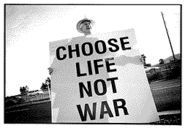
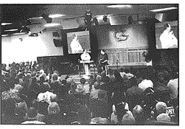
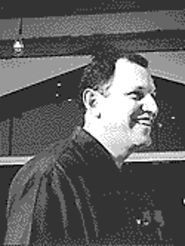
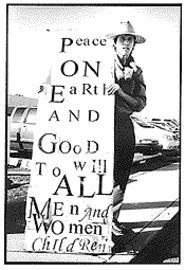
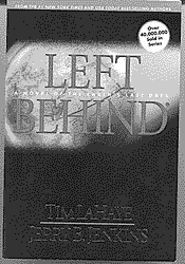
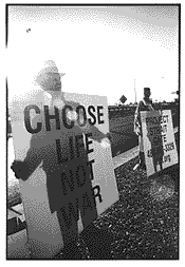
For me there is an ambivalence here. This report was a typical condescending Jew superiority condemnation of dissention , We HOld These Truths. I believe these are the end times for three reasons : fulfillment of prophesy, apostasy of the church , abdication of the HOly SPirit and the revelation of the ANti-CHrist.
But I respect Pastor Carlson for not being intimidated nor fear the humiliation by false testimony. As for me . There is a time for peace amd a time for war. Jesus was spit upon by the same people as these who have now prevailed. He was persecuted by these self righteous bastards and he was spitefully murdered by these that now say false things about you. Peace is the greatest of all gifts. But Jesus was not a lamb but a lion.
Who did this to us?
Does it not go back to the genocide of the native Americans?
Are not Americans addicted to and bennifit from war?
A poem for my evangelical friends as I love you so
” Warn the church
America is a banana republic
We need foreign missionaries
To tell us about Jesus
How does foreign missions work as you always avoid politics
Safer you see as we have been lied to and what is truth as pilot once said
Politics divides even brothers yet United in him
Who would do that but an enemy within
I prefer his truth over their’s
As the old time hymns say their’s victory only in him
My personal opinion is I shall follow him
Many steps above born again”
Keep up your fine work